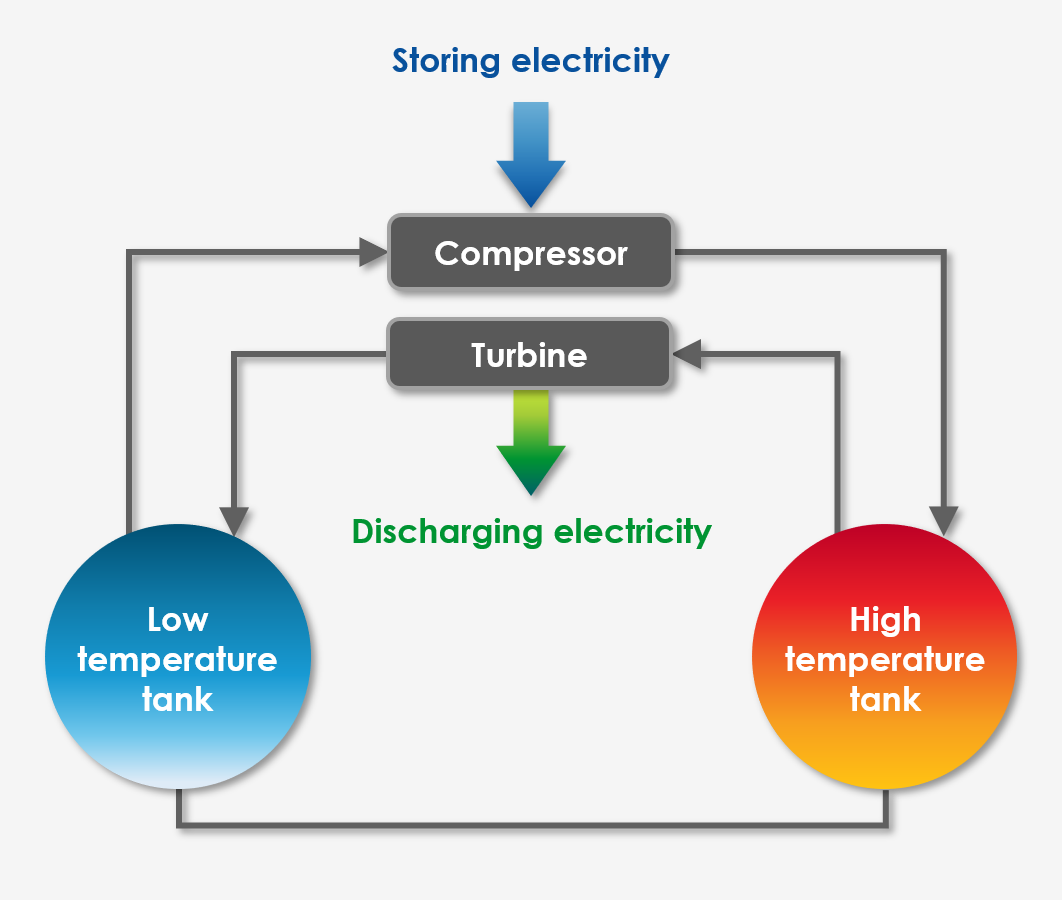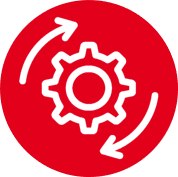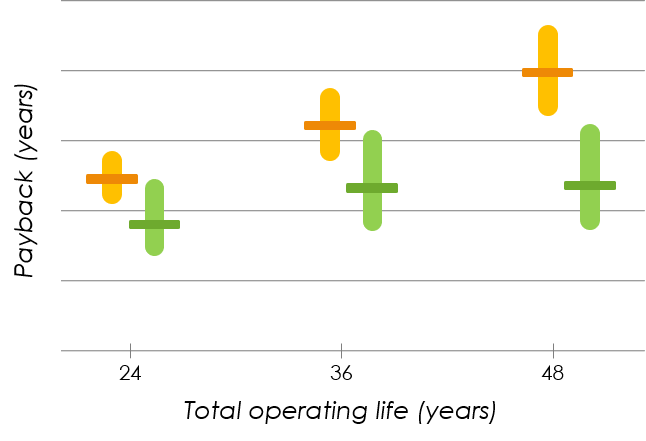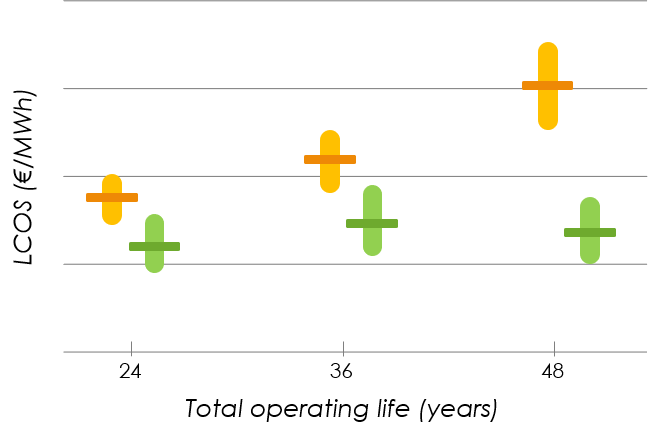The Technology
STOLECT is an electricity storage process based on the reversible conversion of electrical energy into thermal energy.
The conversion is carried out by using turbomachines to circulate air in the system.
- In the charging phase, a compressor converts the electrical energy from the grid into heat by compressing the air. This heat is then stored in materials capable of storing large amounts of energy and withstanding high temperatures. These materials are either natural rocks (basalts) or recycled ceramics.
- In the discharging phase, the materials give up their energy to the circulating air, which then drives a turbine. The turbine is coupled to an alternator which feeds the energy produced back into the electricity grid. The energy not extracted through the turbine is re-stored for use in the next cycle.

STOLECT thus uses the thermo-physical properties and the capacity of certain materials to store large quantities of energy in the form of sensible heat and does not rely on electro-chemical reactions or state changes.
This technology is a breakthrough compared to the large-scale storage methods known to date (Pumped Hydro, CAES, AA-CAES, hydrogen storage), as it has major advantages:

Durable design
STOLECT uses conventional, recyclable and widely available materials from around the world: steel, natural rock, refractory materials...
STOLECT does not contain any critical materials, which can be expensive, rare, polluting to extract and controlled by a small number of actors.

Cost-effective technology
The combination of investment costs, efficiency and lifetime ensures that STOLECT is highly cost-effective.
Economies of scale are also very important and the system is particularly competitive for large capacities.

Long operating life span
The combination of investment costs, efficiency and lifetime ensures that STOLECT is highly cost-effective.
Economies of scale are also very important and the system is particularly competitive for large capacities.
The lifetime of the plant is high thanks to the appropriate design and robust equipment. The lifetime is therefore of at least 30 years, and a retrofitting can extend the lifetime at a lower cost by replacing only the required components.

No location constraints
STOLECT design is optimized for easy installation worldwide with a small footprint and low environmental impact

High efficiency
The efficiency of the technology is high, up to 70%. Heat loss through the walls is limited by correctly dimensioning the insulation.

Modular and flexible design, suitable for large capacities
Power and energy capacities of the system are independent and can therefore be adapted to the needs of the user, tanks can be coupled to increase capacity.
The design is suitable for needs from a few MWh to several GWh.
These strengths make it a particularly suitable process for the large-scale storage of renewable energies to overcome their variability, which represents a strategic challenge for many geographical areas, in France and worldwide, and for several categories of end uses.
FOCUS: Competitiveness of STOLECT
- STOLECT is based on known technologies and widely available materials, as well as on a network of French and European industrial partners
- STOLECT design decouples energy capacity from power capacity, making it possible to increase energy capacity at low cost, at a fixed power level. This allows for competitive investment costs.
- The long service life of STOLECT is around 30 years and can be extended by retrofitting the system
- When retrofitting, only the required components are replaced, unlike electrochemical batteries
Thus, despite higher OPEX for preventive maintenance and servicing of turbomachinery, and lower efficiency, STOLECT, with an initial investment comparable to that of lithium batteries, is more competitive in terms of LCOS (Levelized Cost Of Storage) than most electrochemical batteries, and is much more flexible in terms of installation sizing
The following is a comparison of the cost-effectiveness of two 0.7 MW/3.5 MWh systems, with lithium batteries or with STOLECT, in the case of storage used in an isolated area with near-daily cycling from excess renewable production.
For a complete comparison, we take a given time horizon, and compare all revenues and expenses over this period, including battery replacements and STOLECT retrofits. Values are chosen to define optimistic, median and pessimistic scenarios for each technology. The assumptions used for STOLECT correspond to the first systems sold.
All profitability indicators are better for STOLECT, largely due to the longer lifespan of the system.
Over a long time horizon, STOLECT's returned cost of stored electricity and payback period are twice as low as lithium.


Interested in energy storage? Each profile is unique, so please do not hesitate to contact us to find together the best energy mix for your situation.
